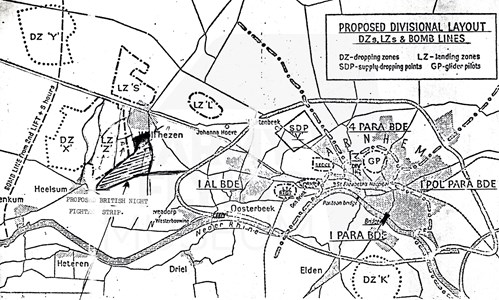Operation MARKET GARDEN: 80 Years On

September 2024 was 80 years since Allied troops, in particular those of the Glider Pilot Regiment, fought at Arnhem during Operation MARKET GARDEN.
Operation MARKET GARDEN was the plan which aimed to move the Allied forces across the Rhine and into Germany via the Netherlands, thereby outflanking the Siegfried Line and making possible a clear, armoured advance into Germany. Crucially, this would have meant a rapid advance into the Ruhr region of Germany which was the country’s industrial heartland. If successful, it was hoped by Allied High Command that Operation MARKET GARDEN would help bring the war to an end by Christmas 1944. The main objective was to capture a series of key, strategic bridges in the Netherlands, across the River Rhine, the River Maas and smaller tributaries and canals.
The operation contained two elements. The element titled GARDEN consisted of a ground advance by the XXX Corps up Highway 69 which crossed all of the bridges and ended at the bridge at Arnhem, over the Rhine. Meanwhile, MARKET was the airborne element of the operation which saw British and American troops land ahead of the ground force and secure target bridges and then hold them until support arrived. Within the Allied contingent, the aim of the Glider Pilot Regiment was therefore to deliver advance troops, weapons and equipment of the 1st British Airborne Division, in order to take the bridge at Arnhem. Within MARKET British glider pilots played a crucial role and it is their involvement which the below remembers.
The British Glider Pilot Regiment flew 667 Horsa, Hamilcar and Hadrian gliders during Operation MARKET which were carrying around 4,500 troops, some 600 jeeps, and 95 guns. These gliders were separated into different lifts which took place from the 17 September through to the 19 September. The First Lift on the 17 September saw 358 gliders and their tug aircraft take off. 38 of these aimed to fly to Landing Zone (LZ) ‘N’, whilst the other 320 gliders were targeting LZs ‘S’ and ‘Z’. On the second day of the operation, the Second Lift took place. This involved 297 British gliders aiming to land at LZs ‘S’ and ‘X’, although 24 gliders landed prematurely, mainly because of engine failure, rope breakage, or because of flak damage. The Third, and final, lift took place on the 19 September and saw fewer gliders flying, as 44 glider sorties were carried out. These gliders were to target LZs ‘L’ and ‘S’, although some of these gliders were abortive on previous lifts so flew to their original LZs. All three lifts saw numerous abortive sorties and future planned glider lifts had to be abandoned due to the events of the battle but ultimately, the role of the gliders in delivering troops and equipment was a success.

An important reason why future lifts had to be abandoned was because by day four British positions at the bridge at Arnhem were under constant attack by the Germans. This meant that glider pilots were ordered to remain with 1st British Airborne Division and had ended up heavily engaged with the enemy, so they were unable to go into reserve and be withdrawn. The situation at Oosterbeek was like a cauldron of fire, as the Allied soldiers were encircled by German forces and under heavy bombardment. The paratroopers and glider pilots were unprepared for the overwhelming German numbers, including tanks, which were able to oppose any early advances made after the landings. However, this dire situation exemplified the glider pilots’ role as ‘Total Soldiers’, for they were both a pilot and an infantryman and were prepared to fight as well as fly.

Nine days of fierce fighting, eventually saw an Allied retreat from the bridge at Arnhem, back across the Rhine and down to the Dutch town of Nijmegen. The operation was not a total defeat for the Allies though, as significant advances were made into German controlled territory and many towns in the Netherlands were liberated. However, the ultimate objective of crossing the Rhine was not achieved and many lives were lost. More than six thousand out of around 10,300 airborne troops were captured and around 1,400 were killed. Only around a quarter of the Allied troops were able to successfully retreat and many British glider pilots were captured, wounded or killed. Five Victoria Crosses were awarded for actions taken at Arnhem. Sadly four of these were awarded posthumously.

This is the end of our 'Operation MARKET GARDEN: 80 Years On' blog post. Please let us know your thoughts and questions in the comments section below and make sure to check out our other blog posts.
Written 2024


